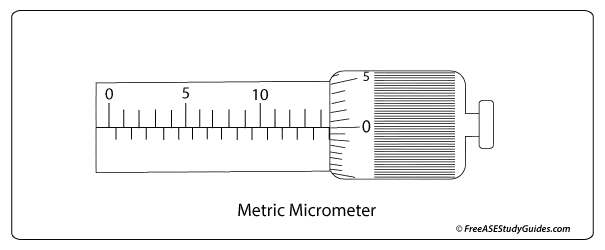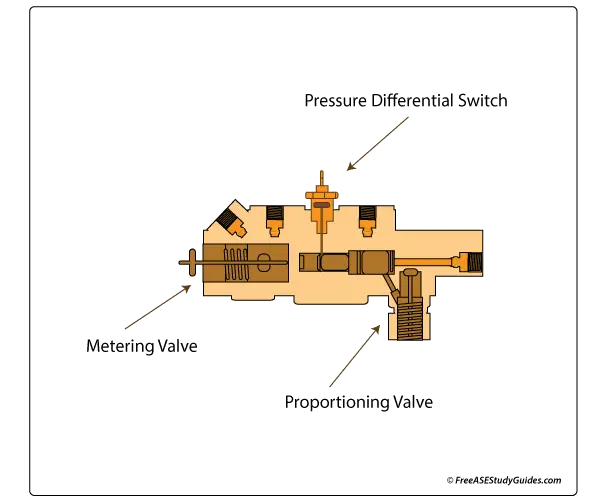ASE A5 Brakes Practice Test
16. After replacing the front brake calipers on a vehicle with a four-wheel disc brake system, the vehicle returns with brake drag. Which of the following is causing this condition?
- A. Glazed brake shoes.
- B. Brake shoe adjustment.
- C. Glazed brake pads.
- D. A twisted brake hose.
17. A lateral runout test is performed on all four rotors. Which of the following is correct about this test?
- A. This test checks for rotor thickness.
- B. This test checks for rotor parallelism.
- C. Use a dial indicator.
- D. Use an outside micrometer.
18.

The reading on the metric micrometer above indicates:
- A. 13.0 mm
- B. 13.5 mm
- C. 14.0 mm
- D. 14.5 mm
19. Which brake line is best suited for automotive brake line replacement?
- A. Double-walled steel tubing.
- B. Double-walled tin tubing.
- C. Single-walled seamless copper.
- D. Single-walled welded copper.
20. Technician A says a three-function combination valve contains the proportioning valve. Technician B says a three-function combination valve contains the metering valve. Who is correct?
- A. Technician A
- B. Technician B
- C. Both A and B
- D. Neither A or B
